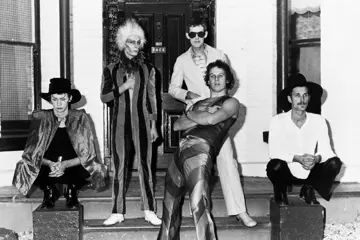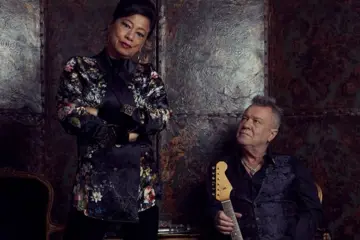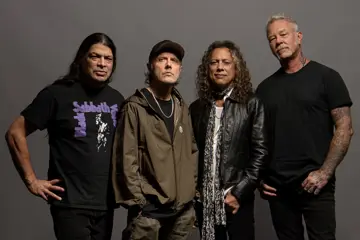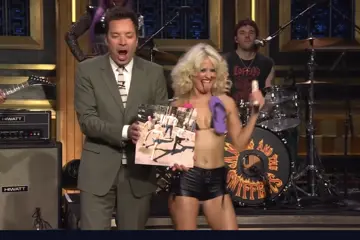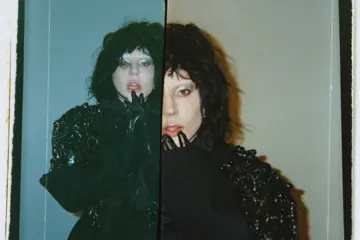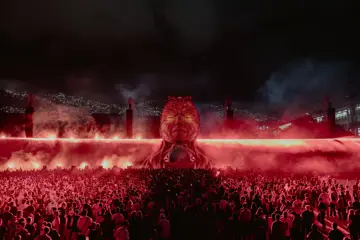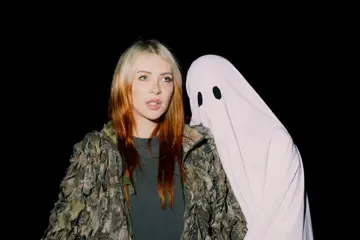
In the European cultural consciousness, the dance of death, more commonly referred to as the Danse Macabre, is a ghoulish and frightening memento mori. Historical tableaux feature eerily jubilant skeletons with a spring in their step, delighting in whisking away human souls. No one, young or old, prince or pauper, can escape the inevitable end of life.
The Buddhist philosophy takes a different tack. Death is not the end, but rather the beginning of a cycle of rebirth, as souls transition through the energy of the cosmos, infinitely reincarnated. Contrary to Western sentiment, to die is joyous, not despairing.
At the centre of this belief is "citta", an all-encompassing and indestructible life force, intangible yet shared by all living things. This spiritual nexus is given form in Thai choreographer Pichet Klunchun's Dancing With Death, as an undulating circular stage, like a ribbon of existence pulsing with light.
As the audience files into the pop-up venue created on the stage of the State Theatre, inquisitive and playful entities, in eye-popping fluorescent garb, welcome theatregoers with friendly mimes and cheeky prances. In stark contrast, as this procession of psychedelic shamans spin and head-bang, a stone-faced figure, dressed all in white, slowly enters with a deliberately solemn pace. In a pool of light, she crosses an invisible barrier onto the curving arc of the stage, passing from one world to the next. She is joined by five more figures, who in super slow-motion traverse this circuit, their gait distorted at near impossible angles against the force of gravity.
Klunchun's practice is disciplined in the extreme. His concepts are given enormous space, to the point of being almost impenetrably glacial. And yet, there is an important clarity in this stasis. Ideas flow seamlessly, almost unnoticed, as the dance slowly evolves, becoming more distinct and explicit. At first, the gestures gradually emerging from the calm appear emotionless, like the ritualistic totems of some unfamiliar rite. But as these moves accrue more energy, they are revealed as a lexicon of human need; the vocabulary of desire, of piety, of lust, of anxiety. Limbs are slapped and guts punched, like a self-flagellating monk cleansing their spirit. Tongues are provocatively thrust out, hands grabbing, faces leering, as a wave of sexual urgency overcomes the stage. With arms outstretched, eyes wide and pleading, a silent cry for help suddenly concertinas into a collapsed, squatting hunch.
The performers sprint around their circular world, as if trying to outrun an inexorable fate, oblivious to its unbroken loop. Elements of folk dance percolate through Klunchun's choreography - sweeping, meditative swaying; elegantly folding hands; flat-footed, rhythmic shuffles - rooting this piece in a specific cultural mindset. Yet, the themes explored through this work's subtle virtuosity are universal. The figures on stage, save one, begin to bop and gyrate with all the unselfconscious drunken finesse of a wedding reception. They step off their mortal coil and are welcomed to this new plain of existence by the vivid spirits and a throng of revelling souls. It's a brilliant and irresistibly uplifting moment, as death is embraced with a sense of joyful anticipation. There is something deeply touching yet easily accessible in this cadence: death is a rave, so let the music play and join the dance
All the while, one lone figure continues to move around the circumference of the living world, blind to the elation that awaits her, and this seems to speak to the futility of fearing our own mortality and the emotional absolution that accepting our fate could provide. By turns, Dancing With Death also counters that wisdom in its exploration of the innate competition between the psychological and the spiritual and the ineffable intersection of our hardwired self-preservation and the counterintuitiveness of faith. On its most poetic level, it suggests the world beyond this one does not divorce us from our humanity, but rather releases us from the earthly responsibilities and uncertainties of our corporeal existence.
Asia TOPA presents Dancing With Death, to 4 Mar at Arts Centre Melbourne.

